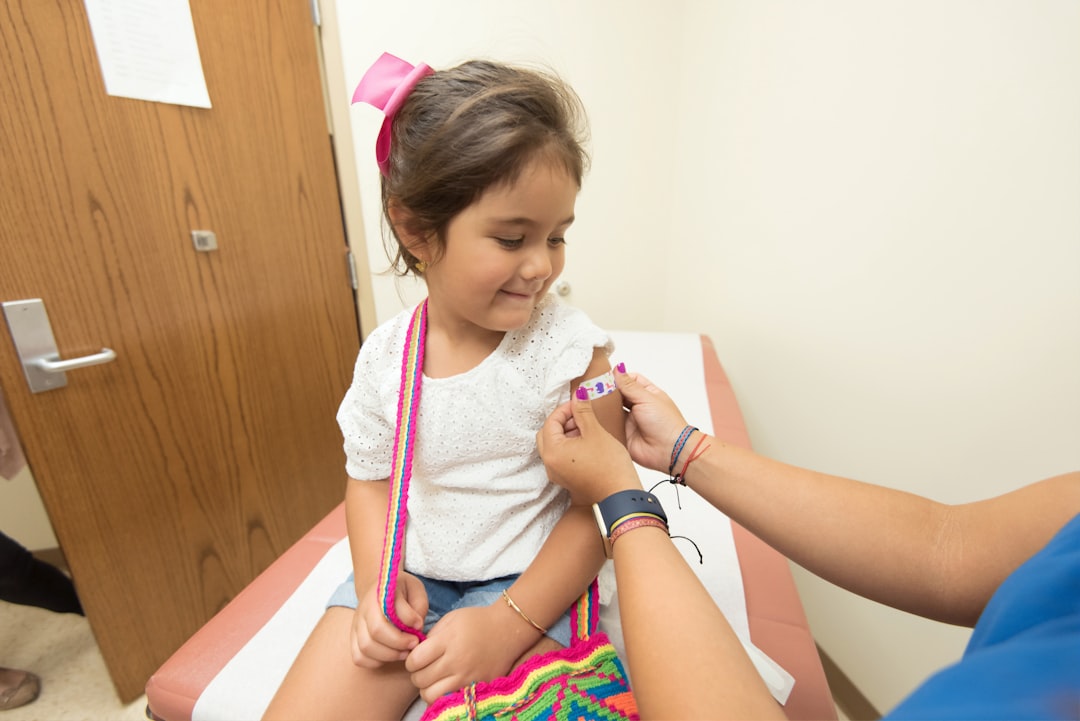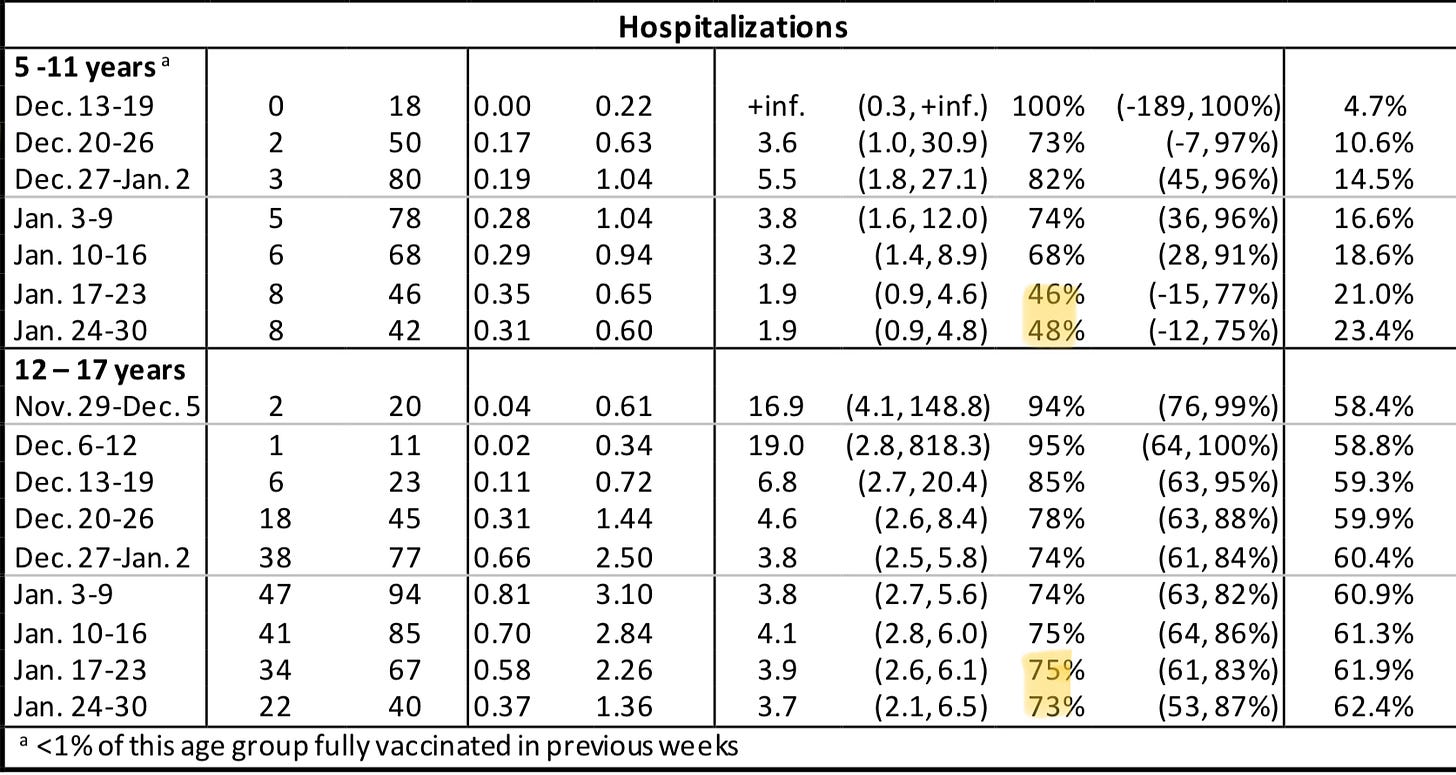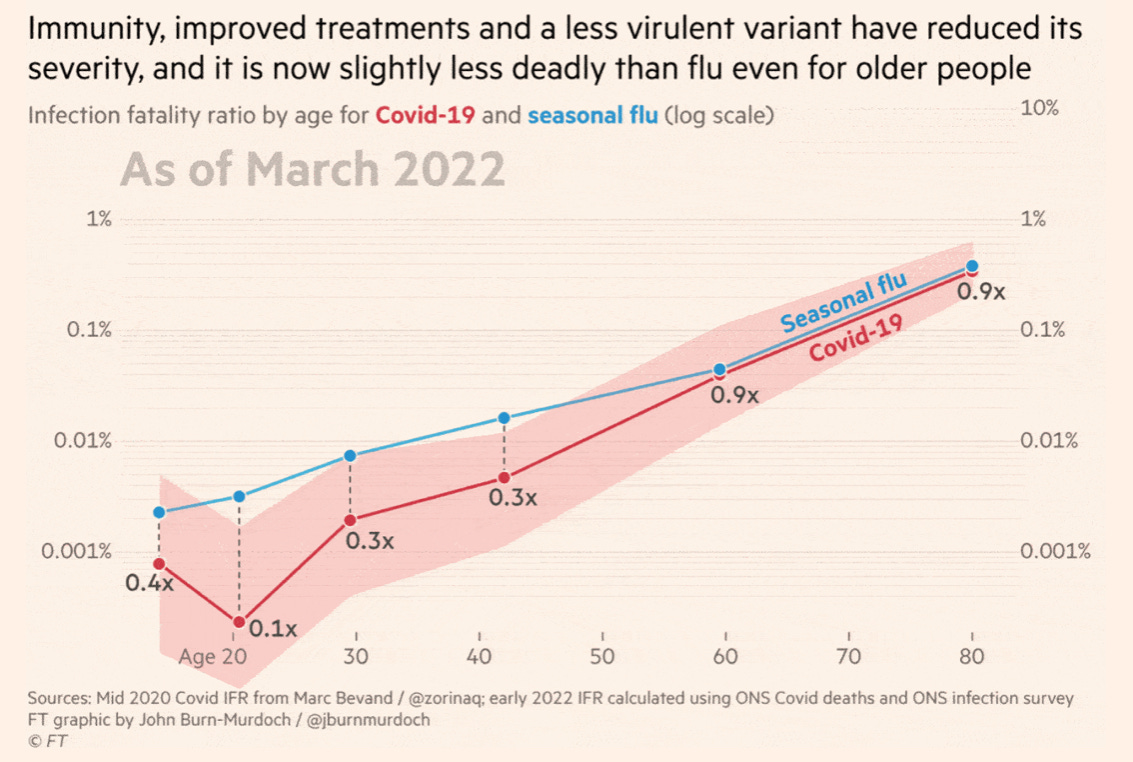The FDA is About to Approve Covid-19 Vaccines for Young Children… But Should It?
The data is unremarkable, but the pressure to grant EUAs runs high.
I’m not in the best of moods today, having woken up with a raging fever, chills, muscle aches, and a feeling like the inside of my skull was being lit up by a blowtorch. Yes, I finally got my case of Covid-19, almost certainly from a 100% outdoor school performance. Go figure. I’ll say to whomever thought it was funny calling this #Omicold (yeah, I’m looking at you, Marty Makary): my patients and I disagree. However, with a brief Tylenol-induced respite from my misery, what better subject matter to discuss than the pending approval of the Covid vaccines for young children? It’s the ideal topic for a doctor in a seriously grumpy mood.
I’ll say the obvious part first: we physicians are supposed to be excited about every vaccine approval, because all vaccines are wonderful, and only bad doctors complain about any vaccine. Let’s be real, though; a vaccine with zero (or negative) effectiveness and a high rate of side effects is a loser, and a vaccine with near-total effectiveness and few side effects is a clear winner. Every vaccine is on a spectrum, and we should not approve examples of the former, and we should strongly endorse the latter, especially if the disease in question is severe. The billion dollar question is: where do the Pfizer and Moderna vaccines for young children fall on this spectrum?
Starting with Pfizer, readers might recall that their vaccine project for 6 months to 5 years has been a bit of a dumpster fire. The 2-5 year olds failed in their immunobridging tests for the 2 shot series (the antibody response was below that for young adults in their initial studies); as I discussed at the time, likely the tiny 3mcg dose was just too small. After some serious hemming, hawing, and misdirection, the FDA ultimately asked Pfizer to add a 3rd shot some 8 weeks after the primary series was given. This went better; immunobridging was positive, and the listless vaccine efficacy from the 2 shot series appears to be better.
But “better” is by no means “great”. Some media outlets are claiming “80% efficacy” for the vaccine, but this is irresponsible, especially with the study’s sample size being so tiny.
Put mildly, I would be very surprised that further reporting after more cases have accrued will bring anything like 80% efficacy. Of course, we also have good reason to expect from virtually every real world data set we have on the subject, that whatever the initial efficacy against Omicron infection, it will rapidly wane within months.
Moderna had a less convoluted road to data submission. Their trial of a 2-shot series, at the much higher dose of 25 mcg for 6 month to 6 year olds, unsurprisingly met their immunobridging endpoint on the first try. Of course, creating an immune response that rivals that of an effective vaccine, and actually being an effective vaccine, can be two different things. When it came to actual efficacy, the numbers were rather humbling, at around a 40% reduction in infections. This was below the 50% threshold proposed by the FDA prior to the approval of the adult vaccines, an inconsistency not lost on some observers. To be fair, though, these numbers are similar to the real world data we have on the mRNA vaccines’ initial two-shot series in adults against Omicron infections. In a large UK study, initial effectiveness was in the 65-75% range, but that dropped to 8-15% after 25 weeks.
All in all, it begs the question: what are we doing here? Short of boosting every 3-4 months, these vaccines make minimal inroads into reducing transmission. In the words of the World Health Organization, from their primer on the Moderna vaccine:
We don’t know if vaccines reduce the risk of long Covid, and what little real world evidence we do have is not very promising. It would be nice to know that severe disease in high risk children will be reduced via vaccination. This seems extremely likely to be the case, but the one cause for concern has to be the size of the dose chosen by Pfizer. Three micrograms seemed like a low dose when initial efficacy and immunobridging reports came out, and with Moderna using a 25mcg dose in this age group with less-than-stellar results, it seems even more likely now.
Due to the small size of the Pfizer trial for young kids, despite a very expanded criteria for “severe disease” (including rapid heart rate, elevated breathing rate, etc.), there were too few cases of serious illness to draw conclusions. Six cases of severe disease were in the Pfizer group, none after the 3rd shot, however, and only one was likely truly caused by Covid, and the same can be said of the two cases in the placebo group.
My concern is for the next age group up: the 6-11 year olds who received a 10mcg dose. A New York State pre-print showed a rather striking drop in effectiveness between 11 year olds and 12 year olds (who receive 30mcg doses) in the Omicron era, and a more concerning drop in protection versus hospitalization as well:
Yes, I worry about confounders in real world data of this sort, but that hard drop from age 12 to 11 is striking.
While we have no real world data on severe disease on lower doses with Moderna, since they are only going through the approval process this week for ages 6-11 at 50mcg, that 25mcg dose for 6 months to 6 years would seem ample. It does bring me to ruminate on our assumption that Moderna and Pfizer are essentially equal microgram-for-microgram. Those with long memories might recall that Pfizer bailed out of a 30mcg dose in their ages 5-11 Phase 1 trial due to every single kid getting a fever; and yet 50mcg of Moderna does fine in this same age group? Either Moderna’s thermometer is broken, or some brilliant vaccinologist needs to explain to us how these doses really compare.
On the subject of fever, the kids in the Moderna trial had a rate of fever over 100.4 degrees in the 15-20% range; in the Pfizer trial, that stood at 5-7% (and was barely higher than the placebo group, a sure sign that Pfizer’s thermometer works really well). I looked through the reports on adverse events until my eyes hurt — which, granted, does not take much today — and did not see anything worthy of concern. I truly think these vaccines are quite safe, despite the fact that both trials were too small to pick up rare adverse reactions in the 1 in 5,000 or 1 in 10,000 range.
So why the hesitation? I stand by what I wrote in February:
Hence the value of knowing the effectiveness of the vaccines we recommend. I favor the EUA for these vaccines in this population, mostly because I believe in choice, and the parents of high risk children with health concerns like obesity, neurodevelopmental disorders, and compromised immune systems, are anxious for a vaccine, any safe vaccine, that might help protect their children from Covid-19. However, it strikes me as quite possible that these vaccines will have minimal value for normal risk kids, and especially the majority of U.S. children who have already had a Covid infection. We simply lack the data to evaluate that concern.
This could have been avoided. The FDA — which has its long arm in the execution of all these trials — could have insisted on longer term, larger trials with enough early reporting of data to get an approval by now (or sooner) for high risk groups. When the dust settled, we might have known if “long covid” or severe disease could be prevented, and in which subgroups. That we will probably never have this data is a failure of governmental oversight.
I will end on this note, although it is not one that the “Covid Minimizers” will appreciate: Omicron is a serious problem. Yes, it may have been reduced to flu-like mortality by vaccines and infections:
However, like most Americans, I only get a symptomatic case of the flu every decade or so. I don’t hang out in bars much, and, for reasons which I cannot grasp, am not invited to a lot of parties. Getting this sick from an outdoor gathering of maybe 50 people? This wave-after-wave BA.2>BA.2.12.1>BA.4&BA.5 pattern happening in the once-friendly seasons of late spring and early summer is distressing. What #Omicold might not do in terms of disease severity, it can accomplish with sheer contagion; and Omicron sub-variants are only getting better at transmission and immune evasion.
That’s probably the best justification for pushing out these vaccines now; even a small edge against infection and hospitalization or death can make a difference on a societal level of suffering and hospital strain. I just wish that the FDA, Pfizer, and Moderna had conducted these trials in such a way as to allow us physicians a real plan. Maybe Moderna for high risk kids who shouldn’t wait another 8 weeks for decent protection? Pfizer for parents worried about side effects who don’t mind a 3-shot series? (Although it’s rather clear that Moderna will be a 3-shot series eventually.)
The greatest failure in a time when so many kids have had Covid has been the lack of reporting clinical outcomes in previously infected children. If we’re to believe that 75% (and rising) of children have had Covid, this needs to be the primary outcome group in all these trials.
I’m sure that VRBAC will recommend these vaccines to the FDA on Wednesday; and that ACIP will endorse to the CDC soon after, and kids will have access to both vaccines within weeks. The public health community will celebrate these approvals unabashedly. But this doctor will continue to be grumpy at the slipshod nature of the trial data Pfizer and Moderna were allowed to collect, and the vacuum in knowledge we’ll need to work around as we advise our patients.










Everyone I know who was not vaccinated it was Omicold...to everyone who was vaccinated it included your symptoms of fever, chills etc. Not scientific but..
The universal vaccination, and the focus on very young children, is only designed to do one thing: eliminate the control group and shield Pfizer and Moderna and their partners in the public health arena that pushed these useless and often dangerous shots. Pushing these in late 2020 when it's all we had is one thing, understandable, but pushing them now is bordering on criminal.
The point of universal vaccination campaigns is eliminating the control group, not stopping the virus